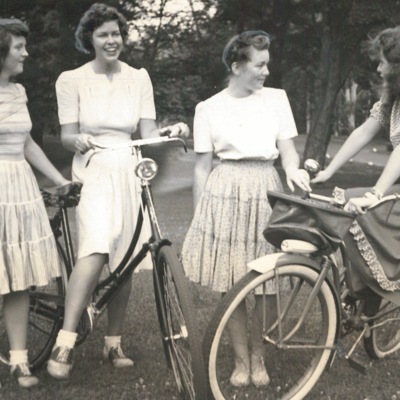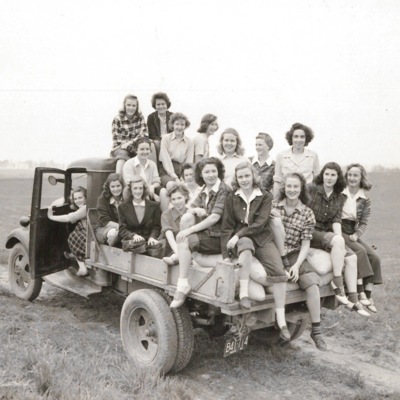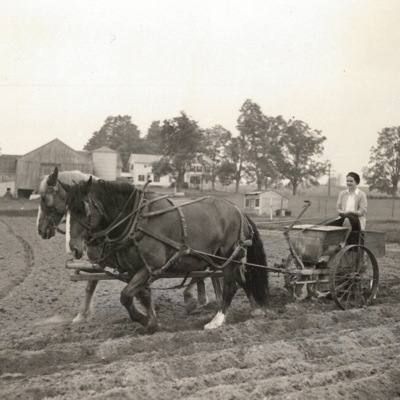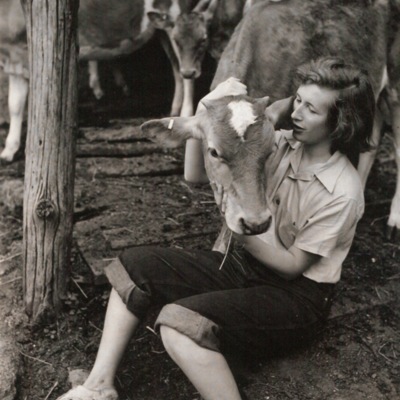Fighting the War on the Homefront
When America joined the War in 1941, many of the young men who worked on South Hadley’s farms left their homes to join the war effort. In their absence, students from Mount Holyoke College volunteered to help local farmers continue their work.
Just months before America became officially involved in the War, Mary Binder (x-Class of 1944) formed the Farmer’s Aid Committee. The Committee was sponsored by the Service Commission of the Fellowship of Faiths at Mount Holyoke and supervised by Professor George Abbe. Through this committee, nearly fifty students were able to volunteer on local farms and provide much needed support for South Hadley farmers.
Part of a National Movement
Although many doubted that college women would be able to sustain heavy farm labor, the students soon proved that they were equal to the task. The students from Mount Holyoke were not alone in their efforts to aid local farmers. In 1943, the Women’s Land Army began to recruit women to help fill the farm labor shortage. In addition to the WLA, individual farmer’s aid associations began to appear across the country. One of these organizations, the Volunteer Land Corps, recruited Mount Holyoke women to continue their volunteer work during the summer months.
“The girls have proved they were serious in their proffers and they’ve proved the modern college girl isn’t afraid of work.” -The Boston, Mass. Post, November 24, 1941
Working Alongside South Hadley Farmers
The farmers who received assistance from the Farmer’s Aid Committee taught students basic farm skills. Alongside farmers and their families, Mount Holyoke students harvested potatoes, husked corn, picked apples, plucked turkeys, painted houses, and gathered firewood. One student traveled to a farm twice a day to milk cows for a woman who was sick. In the spring, students helped farmers prepare and plant the fields. They also performed household chores, allowing farmer’s wives to provide skilled labor in the fields.
At first, the students were not paid for their work however they were later given small sums which they redirected towards the purchase of improved farm equipment or lent out to farmers who needed cash rather than help.
“In many instances farmers have noted that the college girls needed to be told only once how to do a thing, while boys and youths had to be constantly watched and corrected.” – Springfield Republican, May 10, 1942
Gas Shortages and the End of the Farmer’s Aid Committee

The Farmer’s Aid Committee was most active during the spring, summer, and fall of 1942. In the spring of 1943, gas shortages prevented students from traveling to farms that were not within walking distance of the college. Although students could no longer assist local farmers, they redirected their energies towards a new project: the Mount Holyoke College Farm.


